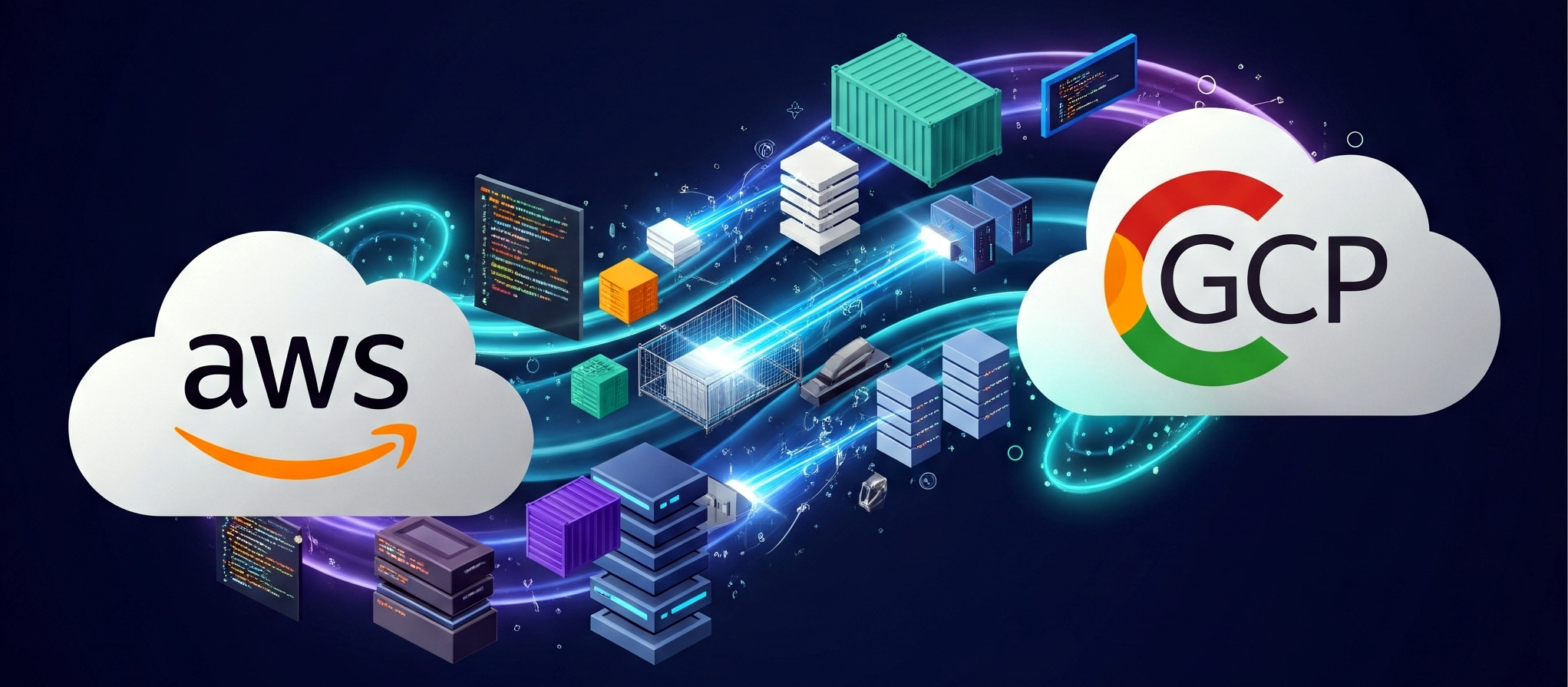As a DevOps or Site Reliability Engineer, the cloud is your playground. You’ve mastered AWS, navigating its vast ecosystem with precision and expertise. But what happens when your organization decides to embrace Google Cloud Platform (GCP)?
The transition from the familiar landscapes of Amazon Web Services (AWS) to the innovative realms of GCP can feel like a significant leap. It’s a journey filled with both exciting new possibilities and a few initial head-scratchers.
In this post, we’ll dive deep into what it truly feels like to make this cloud shift, sharing insights to help you prepare and thrive in your new GCP environment.
The Initial “Muscle Memory” Reset: Unlearning and Relearning
One of the first things you’ll encounter is the need to adjust your existing “cloud muscle memory.” Years of ingrained AWS service names, console layouts, and CLI commands will need a gentle reset.
- New Terminology: Get ready to swap “EC2” for “Compute Engine,” “S3” for “Cloud Storage,” and “RDS” for “Cloud SQL.” While the core concepts remain, the nomenclature is distinctly Google.
- Mental Model Shifts: Beyond just names, the architectural philosophies can differ. GCP often champions managed services and a more integrated, Kubernetes-first approach.
- Documentation & Community: AWS boasts an incredibly mature and extensive documentation library, backed by a massive community. While GCP’s documentation is excellent, you might initially find fewer community-contributed “how-to” guides compared to AWS.
Where GCP Shines: The Game-Changers for DevOps & SRE
Once you navigate the initial learning curve, several aspects of GCP often become standout favorites for DevOps and SRE professionals:
1. Kubernetes at its Core: The Power of GKE
If container orchestration is a big part of your world, Google Kubernetes Engine (GKE) is often the most significant and positive change. GKE is a first-class citizen in GCP, designed with deep integration and robust management. It feels incredibly polished and opinionated, providing a powerful, managed platform for your containerized workloads, often requiring less operational overhead than other managed Kubernetes services.
2. Simplified Networking: A Breath of Fresh Air
GCP’s global VPC and streamlined networking model can be incredibly refreshing. Compared to the often granular and complex VPCs, subnets, and routing tables in AWS, GCP’s approach often translates to less “network plumbing” for engineers. This can significantly simplify infrastructure deployment and management.
3. Intuitive IAM: Security Made (More) Sense
AWS IAM is powerful but can be notoriously complex. GCP’s Identity and Access Management (IAM), built on Google Accounts and a hierarchical resource structure, often feels more intuitive. While still requiring careful planning, many engineers find it more straightforward to manage permissions and secure resources.
4. Data Powerhouses: BigQuery & Cloud Spanner
For organizations with significant data and analytics needs, GCP’s data services are truly impressive. BigQuery is a serverless, highly scalable data warehouse that feels like a superpower for analytical workloads. Cloud Spanner offers a globally distributed, relational database with strong consistency, a unique offering in the cloud landscape.
The “SRE” Lens: Enhancing Reliability & Operations
For Site Reliability Engineers, the transition can lead to significant operational benefits:
- Reduced Operational Burden: GCP’s strong focus on fully managed services (like GKE, Cloud Run, Cloud Functions) often means less underlying infrastructure for SREs to directly manage. This frees up valuable time for higher-value activities: performance tuning, chaos engineering, and developing sophisticated automation.
- Built-in Reliability: Many GCP services are inherently designed with high reliability and scalability, leveraging Google’s global infrastructure. This means the platform handles much of the heavy lifting, allowing SREs to focus on application-level reliability.
- Integrated Observability: GCP’s Cloud Monitoring and Cloud Logging (formerly Stackdriver) provide robust, integrated observability features. This is crucial for SREs to gain deep insights into system behavior, efficiently troubleshoot issues, and proactively identify potential problems.
The Overall Sentiment: Challenging, but Immensely Rewarding
Making the jump from AWS to GCP is undoubtedly a learning curve. You’ll encounter new terminologies, different architectural patterns, and a slightly different “Google way” of doing things.
However, for most DevOps and SRE Engineers, it’s an incredibly rewarding experience. It expands your cloud skillset, offers a fresh perspective on designing and operating highly reliable systems, and introduces you to powerful new tools.
You’ll discover a cloud ecosystem that feels modern, innovative, especially in areas like AI/ML, data analytics, and container orchestration. As you gain proficiency, you’ll feel a renewed sense of empowerment, equipped to build and operate robust, scalable solutions on a different, yet equally capable, cloud platform.
Are you an engineer who’s made the shift? Share your experiences and tips in the comments below!

Be First to Comment